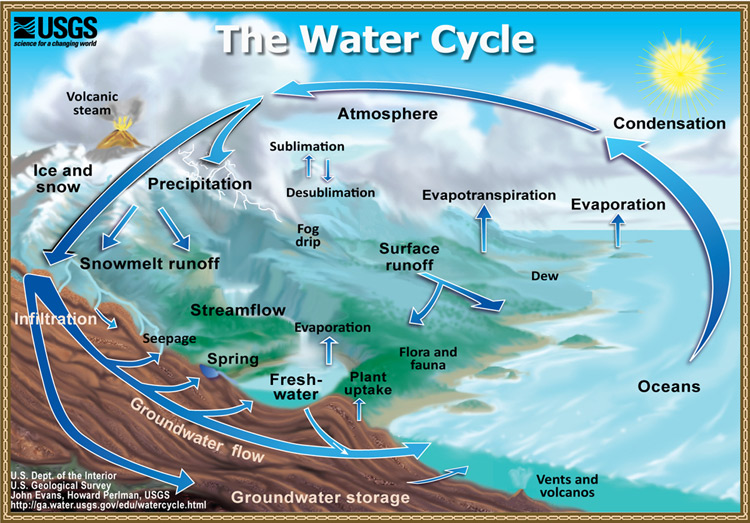The hydrologic cycle, also known as the water cycle is a way of describing the material flow of water throughout the Earth. This series of steps describes how water moves across the Earth and changes form. These specific steps result in the circulation of water between oceans, the atmosphere, and the land. The water cycle involves natural phenomena that include precipitation such as rain and snow, drainage from rivers, and the return of water to the atmosphere through evaporation and transpiration. This natural cycling of water through a variety of different locations on the Earth means that through the history of the Earth, the amount of water has been relatively constant. Little has been added or lost over the years, and this water has been continuously in motion.
The cycle has two primary components: storage and movement. Storage is where water in the system resides or "rests" as it moves from one water reservoir to another. For example, water enters a lake through some movement such as precipitation. After it enters the lake, it stays there for some period of time in its storage phase. Eventually, the water moves back out through some movement, such as evaporation into the atmosphere, discharge into a river, or migration into the subsurface groundwater system. This continuous movement of water among the various storage reservoirs is termed the hydrologic cycle.
It is important to note that water requires energy to change states - from solid to liquid is called the enthalpy of fusion, and from liquid to gas is called the enthalpy of vaporization. The evaporation of water from the oceans and evapotranspiration from continents is a particularly important component of the hydrologic cycle that requires a change of state and input of energy. Since nature follows the law of conservation of energy, the energy to fuel this cycle must come from somewhere. In the hydrologic cycle, this energy comes from the Sun.



